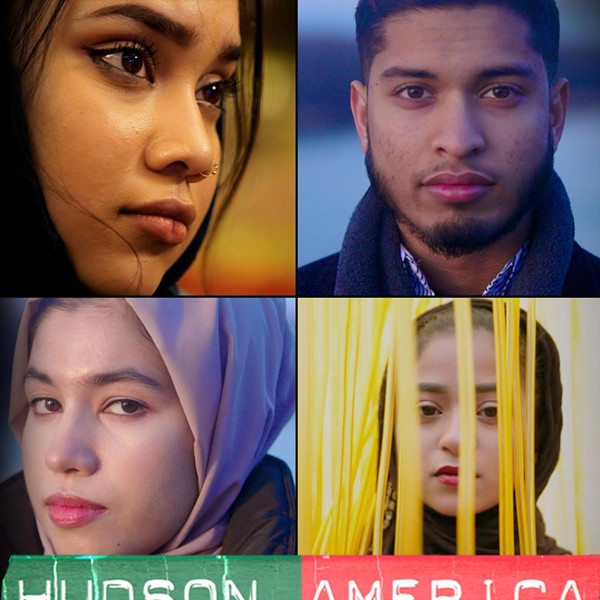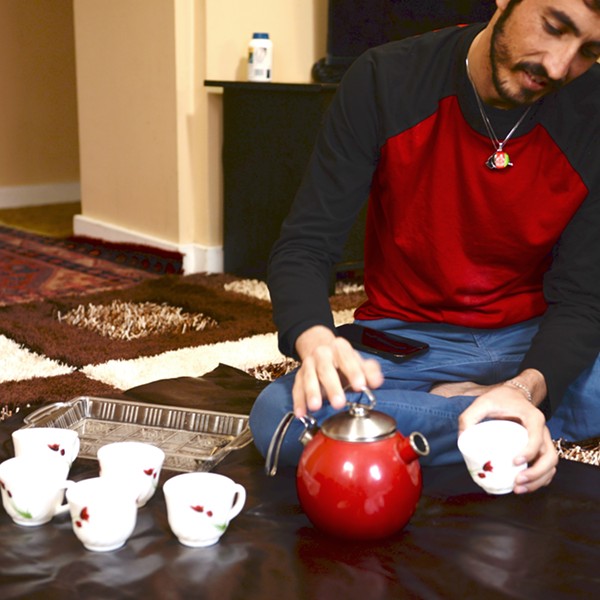In Alexandropoulos, Greece, a Nigerian woman spends her nights servicing men in the hopes of paying off the 40,000 euro debt that she owes the man who smuggled her there. Promised a better life working in a Greek bar, she has instead been forced into a life of sexual servitude. She cannot leave because the man has made sure she fears the native African voodoo spell that has bound her to repay the 40,000 euros.
In Seoul, a Filipina dances naked on a tabletop. Lured to Korea with the promise of marrying an American GI, her third day there finds her bound by her travel debt and unable to speak the language.
In Bombay, a premenstrual girl, bought in the rural Indian countryside, cries out as a silver-haired brothel patron, who has paid for her virginity, rapes her. If she starts to bleed, the madam of the brothel will give the girl ice before sending the next man in. This night, 25 men or more may rape her. If she resists, she will be beaten.
On May 13 of this year a wild-eyed Indonesian woman covered in bruises runs into a Dunkin Donuts dressed only in pants and a towel. Forced to work as an indentured servant for a wealthy couple in Muttontown, Long Island, her life is a hell of physical abuse involving sticks, knives, and cigarettes.
Trafficking of human beings—the domestic or global transfer of people for cash, through deceit, exploitation, or force—is one of the most lucrative forms of international illegal trade, second only to drug smuggling. According to the US State Department’s Trafficking in Persons Report, approximately “600,000 to 800,000 people—mostly women and children—are trafficked across national borders” each year. This does not include the millions trafficked within their own countries. Human trafficking—a contemporary form of slavery—is a global industry with sticky, money-hungry tendrils that extend to every nook and cranny of the world.
According to Wenchi Yu Perkins, director of the New York office of Vital Voices Global Partnership, an international nonprofit organization that has worked closely with issues surrounding the trafficking of women, the term “human trafficking” was coined in the late '80s to early '90s as both a tool and a weapon by nongovernmental organizations (NGOs) to address a brutal industry that was beginning to attract more attention. The term “trafficking in women,” however, has been around since 1910, when prostitutes known as “white slaves” were trafficked for sexual exploitation.
While trafficking has been happening for thousands of years, thinking of it in terms of the sexual exploitation of women is a modern phenomenon. Perkins believes this is due to two factors: that the media finds the subject of women being sold into sexual bondage “sexier” and induces more sympathy than labor exploitation, and the fact that the anti-trafficking movement originated from the women’s rights struggle.
Moisés Naím, editor-in-chief of Foreign Policy magazine, claims that the
$7 billion migrant smuggling industry, which includes the smaller human trafficking industry, is one of the “five wars of globalization,” along with the drug, illegal arms, money laundering, and counterfeit goods industries.
Trafficking vs. smuggling
“Smuggling and trafficking are two very different things,” said Perkins. “You could be a smuggled person in the beginning, but then end up being trafficked. It’s all about whether you are exploited or not. A smuggled person is a criminal and should be [considered] a criminal. But if you are taken advantage of in the process [of being smuggled] you are exploited. If you are forced or if you are deceived in some way then you become a trafficked person. Then, you are a victim.”
“Here we are in the 21st century and we’re talking about slavery,” said Ambassador-at-Large on International Slavery John Miller upon release of the State Department’s sixth annual Trafficking in Persons Report in June 2006. “Wouldn’t this be a shock to our abolitionist ancestors who thought they finished the job back in the 19th century?” More recently in an op-ed for the Los Angeles Times, Miller commented further, “The international slave trade reaches into every country around the world and involves, at the least, a few million people and, by some estimates, as many as 27 million. It includes exploitation and ‘bonded’ labor—in which people are held against their will and forced to work on farms or in factories to pay off obligations that never end.”
Painted smiles
In Chiba, Japan, provincial Filipina and Malaysian girls in short shorts and skirts, cheap sleeveless shirts, and painted smiles circulate around a large room taking a moment to refill drinks and exchange flirty words with the foreign and Japanese customers. Emboldened by alcohol, the customers grow louder and their banter shifts to that of a more sexual variety.















